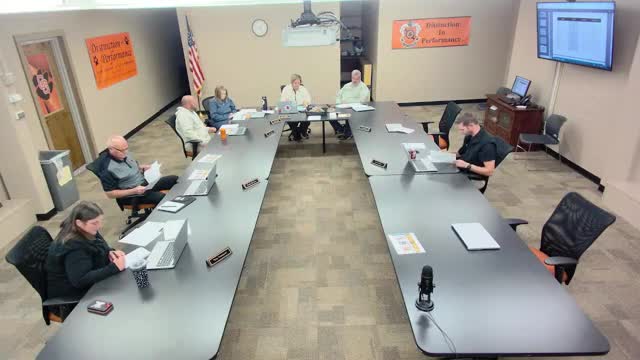School Board Faces Tough Choices on Class Sizes and Pay
October 16, 2024 | OAK GROVE R-VI, School Districts, Missouri
This article was created by AI summarizing key points discussed. AI makes mistakes, so for full details and context, please refer to the video of the full meeting. Please report any errors so we can fix them. Report an error »

In a recent government meeting, discussions centered around the critical issues of class sizes, staff salaries, and funding strategies for local schools. The board revisited the topic of student-to-staff ratios, which currently stand at 18:1 for primary grades, 17:1 for elementary, and 16:1 for middle and high school levels. A survey conducted among staff revealed a split in preferences: 46% favored larger class sizes in exchange for higher salaries, while 53.8% preferred to maintain current class sizes.
The survey, which garnered 117 responses from a total of 275 certified staff, aimed to gauge staff priorities regarding class sizes and compensation. However, it also sparked some confusion and concern among staff, prompting the need for clearer communication about the board's intentions to align priorities with those of the staff.
Additionally, the board discussed the financial implications of hiring critical need staff, noting a $130,000 difference in salaries compared to previous years. The conversation also touched on the potential for a levy transfer to address budget deficits, with the possibility of phasing in a transfer over three years. However, it was clarified that any proposed levy increase would need to be presented as a single ballot question, complicating the decision-making process.
The board is considering whether to pursue a levy transfer alone or to seek an additional increase, with the urgency of making a decision by August to align with the reassessment cycle. Concerns were raised about the risks associated with presenting multiple questions to voters, as a rejection of one could jeopardize funding for the schools.
Overall, the meeting highlighted the ongoing challenges faced by the district in balancing class sizes, staff compensation, and financial sustainability, as the board seeks to navigate these complex issues in the best interest of students and staff alike.
The survey, which garnered 117 responses from a total of 275 certified staff, aimed to gauge staff priorities regarding class sizes and compensation. However, it also sparked some confusion and concern among staff, prompting the need for clearer communication about the board's intentions to align priorities with those of the staff.
Additionally, the board discussed the financial implications of hiring critical need staff, noting a $130,000 difference in salaries compared to previous years. The conversation also touched on the potential for a levy transfer to address budget deficits, with the possibility of phasing in a transfer over three years. However, it was clarified that any proposed levy increase would need to be presented as a single ballot question, complicating the decision-making process.
The board is considering whether to pursue a levy transfer alone or to seek an additional increase, with the urgency of making a decision by August to align with the reassessment cycle. Concerns were raised about the risks associated with presenting multiple questions to voters, as a rejection of one could jeopardize funding for the schools.
Overall, the meeting highlighted the ongoing challenges faced by the district in balancing class sizes, staff compensation, and financial sustainability, as the board seeks to navigate these complex issues in the best interest of students and staff alike.
View full meeting
This article is based on a recent meeting—watch the full video and explore the complete transcript for deeper insights into the discussion.
View full meeting
